Dry eye is a widespread condition that affects millions of people around the world. At Aurora LASIK in Lacey, we offer specialized care for patients from Tacoma, Olympia, and throughout the Pacific Northwest. Our team provides advanced diagnostics and cutting-edge treatment options to support your eye health and enhance your overall wellness.

What is Dry Eye Syndrome?
Dry eye syndrome—also known as dry eye disease—is a common eye condition that affects up to 20 million people in the United States, according to the American Academy of Ophthalmology.1 Dry eye occurs when your eyes don’t produce enough tears or when your tears evaporate too quickly. It can affect people of all ages, but becomes more common with age or in those with certain medical conditions. Unlike occasional dryness, dry eye syndrome is persistent and may impact your ability to wear contact lenses, read, or drive comfortably. Left untreated, it may lead to more serious issues like corneal damage, inflammation, or increased risk of eye disease.
Symptoms of Dry Eye
Dry eye symptoms can vary from person to person, but may include:
- Redness, irritation, or burning
- Watery eyes (due to reflex tearing)
- Blurry or fluctuating vision
- Scratchy or gritty sensation
- Eye fatigue or heaviness
- Light sensitivity
- Difficulty wearing contact lenses
- Mucus discharge from the eyes2
These symptoms can interfere with your vision and quality of life—especially without the right treatment.
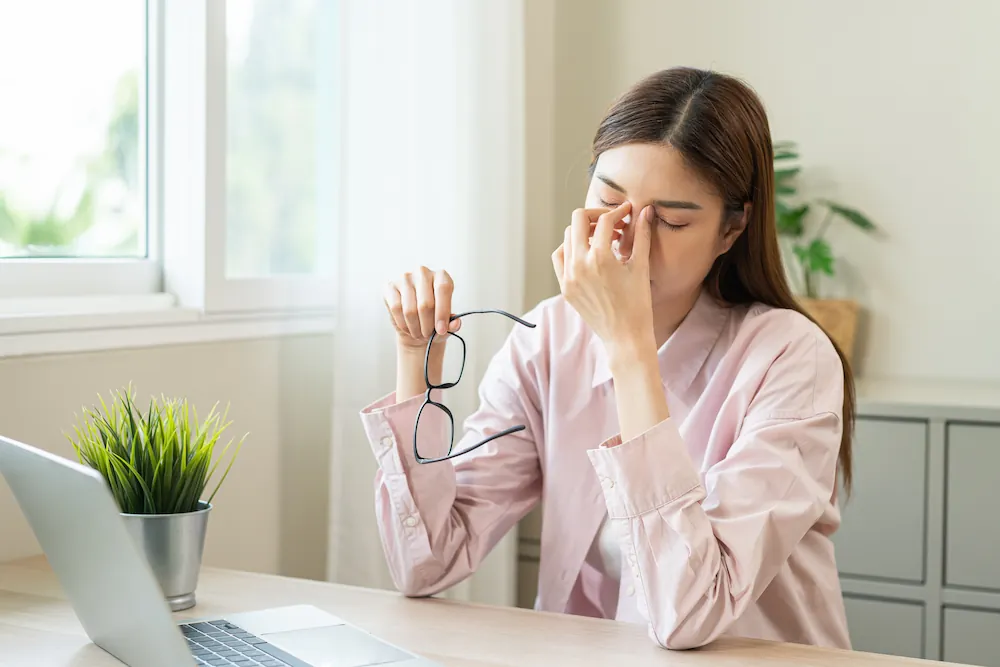
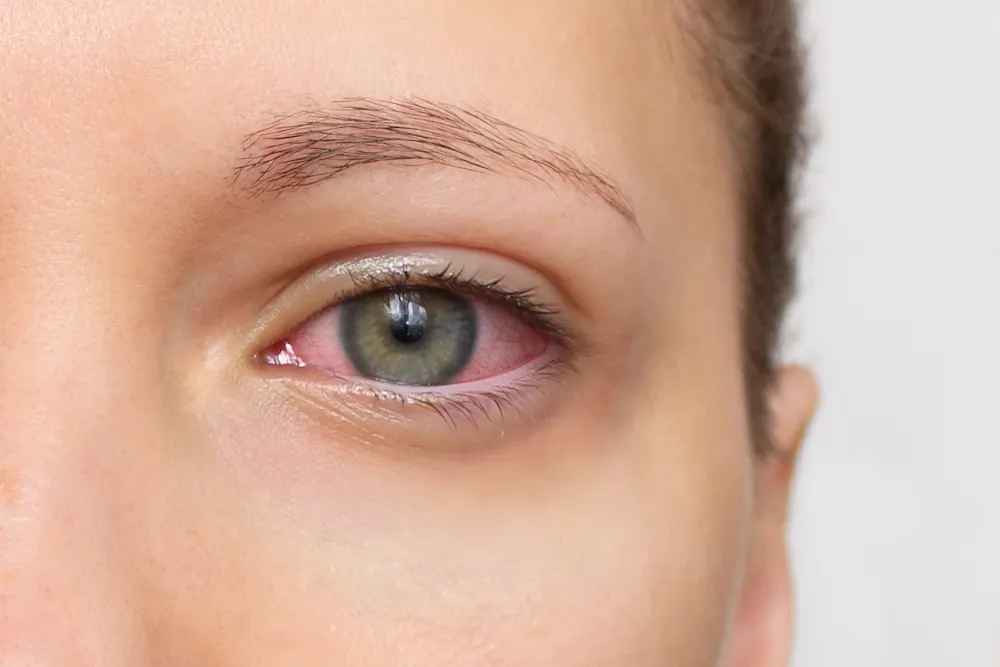
What Causes Dry Eye?
Dry eye can develop for many reasons, including:
- Aging: Tear production naturally declines over time.
- Hormonal changes: Especially during menopause or pregnancy.
- Medical conditions: Diabetes, Sjögren’s syndrome, rheumatoid arthritis, thyroid disorders.
- Medications: Antihistamines, antidepressants, and certain blood pressure medications.
- Environmental factors: Wind, dry air, or smoke can worsen symptoms.
- Contact lens use: Long-term wear may affect tear film stability.
- Screen time: Reduced blinking while using digital devices leads to evaporation.
- Eyelid inflammation (blepharitis) or Meibomian Gland Dysfunction (MGD).
Understanding the root cause is key to selecting the right dry eye treatment.
How Tears Work
Healthy eyes are protected by a tear film that refreshes with every blink. This tear film includes three essential layers:
- Oil (lipid) layer: Prevents evaporation
- Water (aqueous) layer: Provides moisture
- Mucin layer: Helps tears spread evenly across the cornea
If any layer is deficient, your tear film becomes unstable—leading to dry eye disease.
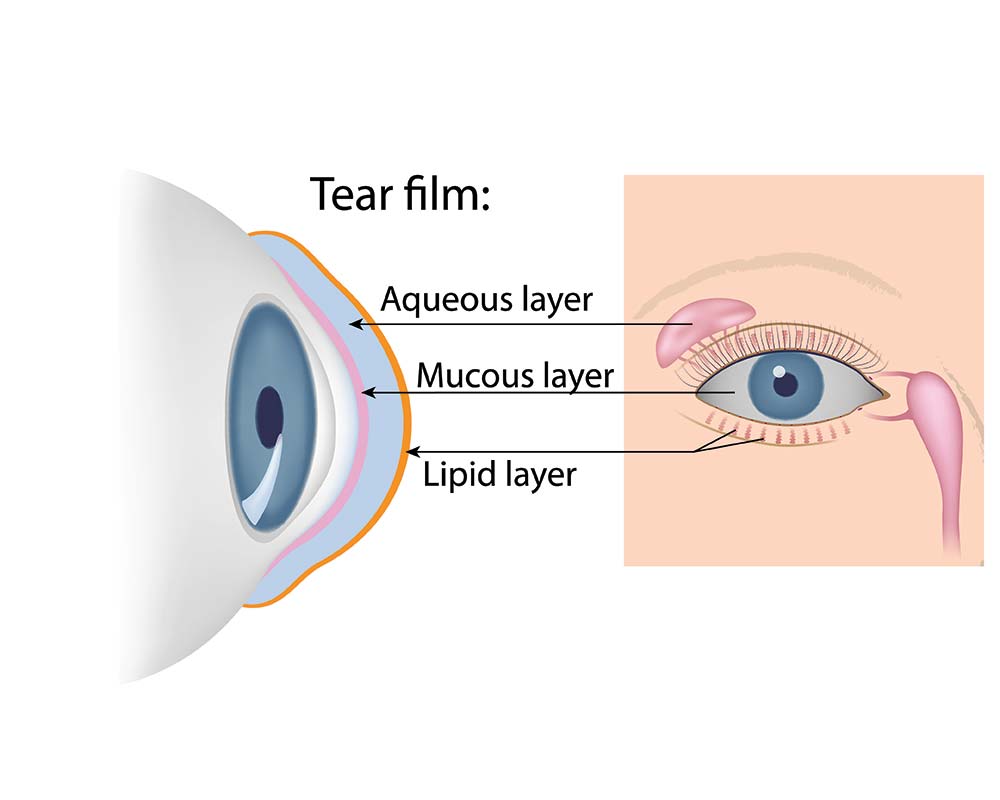
Types of Dry Eye
Aqueous-Deficient Dry Eye
This type occurs when the lacrimal glands don’t produce enough of the watery portion of your tears.
Evaporative Dry Eye
Most commonly caused by Meibomian Gland Dysfunction, this form results from inadequate oil in the tear film, causing tears to evaporate too quickly.
Meibomian Gland Dysfunction (MGD)
Responsible for up to 86% of dry eye cases, MGD occurs when the oil glands in your eyelids are blocked or inflamed.3 It often requires targeted treatment from a dry eye specialist.
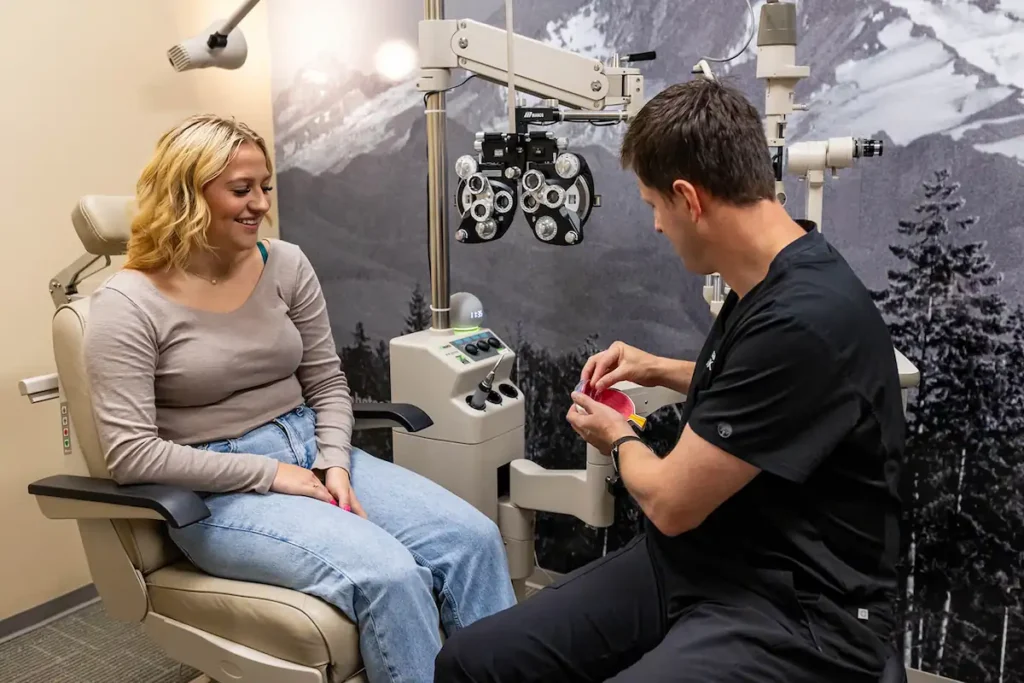
How is Dry Eye Diagnosed?
At aurora LASIK, our eye care providers use advanced diagnostics to identify the type and severity of dry eye:
- Tear break-up time: Measures how quickly tears evaporate.
- Schirmer test: Evaluates tear production volume.
- Corneal staining: Detects damage to the ocular surface.
- Tear osmolarity testing: Checks for salt concentration in tears.
- Eyelid imaging: Evaluates meibomian gland structure.
- Comprehensive eye exam: Includes assessment for related eye diseases like glaucoma, cataracts, and macular degeneration.
Home Remedies for Dry Eye
Mild dry eye symptoms can often be managed with simple lifestyle changes:
- Warm compresses to loosen blocked oil glands
- Preservative-free eye drops to lubricate eyes
- Blinking breaks during screen use
- Humidifiers to reduce dryness indoors
- Omega-3 supplements for tear quality4
While helpful, these remedies may not be enough for moderate or chronic dry eye.
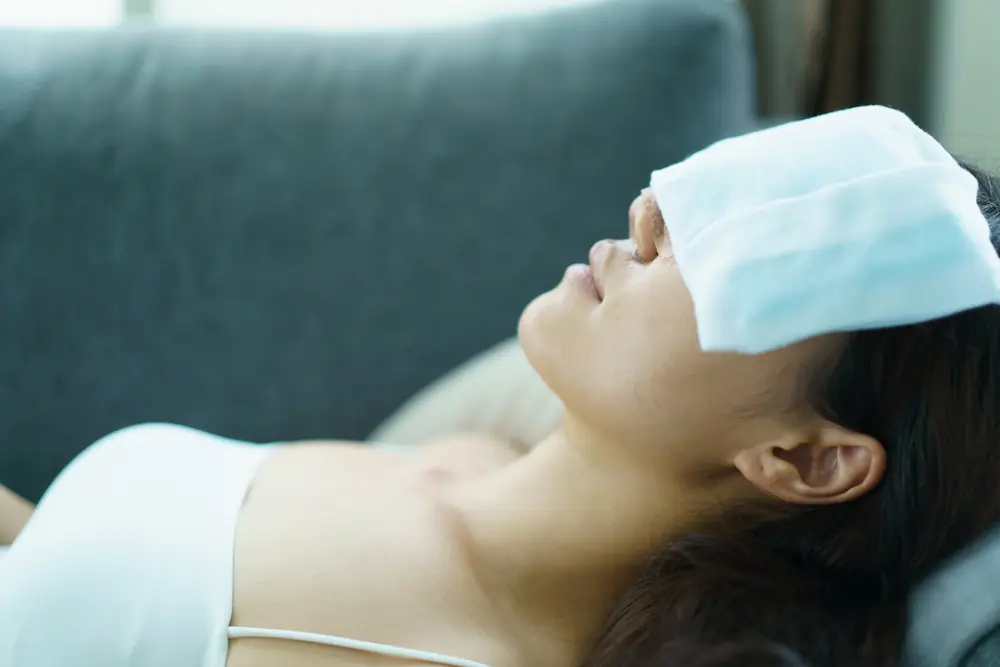
Professional Dry Eye Treatment Options
When home remedies don’t adequately relieve dry eye symptoms, it’s time to turn to an experienced ophthalmologist for effective dry eye treatment. Treatments we offer include:
LipiFlow️ Thermal Pulsation
LipiFlow is a non-invasive in-office procedure that treats MGD by applying gentle heat and pressure to the eyelids. This helps clear blocked meibomian glands, restore the lipid layer of the tear film, and improve tear stability. Patients typically experience relief within weeks.5
IPL (Intense Pulsed Light) for Dry Eye
Originally used in dermatology, IPL therapy targets inflammation in the eyelids and meibomian glands. It reduces abnormal blood vessels, treats ocular rosacea, and stimulates better oil flow. IPL is especially effective for patients with inflammation-based dry eye or MGD.6
FAQs About Dry Eye
This is a common paradox. When your tear film is unstable, your eyes overcompensate by producing reflex tears, which don’t hydrate the eye properly.
Yes. Left untreated, it can lead to corneal damage, infections, and vision issues. Dry eye also reduces your quality of life and may worsen other eye diseases.1
Dry eye is typically a chronic condition, but it can be managed effectively with ongoing care and the right treatment plan.
Coverage varies by provider. Our team will help verify your benefits and explain what is included in your plan.
Schedule a Consultation
If you’re suffering from dry eye symptoms in Lacey, Tacoma, Olympia, or surrounding Pacific Northwest communities, we’re here to help. The eye doctors at Aurora LASIK provide high-quality dry eye care using the latest technology and a personalized approach to patient care. Whether you’re a new patient or seeking a second opinion, our experienced providers are ready to guide you toward lasting relief. Schedule your consultation today and take the next step toward clearer vision, better comfort, and improved quality of life.

1 American Academy of Ophthalmology. Dry Eye Disease. Available: https://www.aao.org/eyenet/article/dry-eye-disease. Accessed June 24, 2025.
2 Mayo Clinic. Dry Eyes. Available: https://www.mayoclinic.org/diseases-conditions/dry-eyes/symptoms-causes/syc-20371863. Accessed June 24, 2025.
3 Lemp MA, Crews LA, Bron AJ, Foulks GN, Sullivan BD. Distribution of aqueous-deficient and evaporative dry eye in a clinic-based patient cohort: a retrospective study. Cornea. 2012 May;31(5):472-8. doi: 10.1097/ICO.0b013e318225415a. PMID: 22378109. Available: https://pubmed.ncbi.nlm.nih.gov/22378109/. Accessed June 24, 2025.
4 Harvard Health. Omega-3s and Eye Health. Available: https://www.health.harvard.edu/heart-health/omega-3-for-your-eyes#. Accessed June 24, 2025.
5 Zhao Y, Veerappan A, Yeo S, Rooney DM, Acharya RU, Tan JH, Tong L; Collaborative Research Initiative for Meibomian gland dysfunction (CORIM). Clinical Trial of Thermal Pulsation (LipiFlow) in Meibomian Gland Dysfunction With Preteatment Meibography. Eye Contact Lens. 2016 Nov;42(6):339-346. doi: 10.1097/ICL.0000000000000228. PMID: 26825281; PMCID: PMC5098463. Available: https://pmc.ncbi.nlm.nih.gov/articles/PMC5098463/. Accessed June 24, 2025.
6 Rennick S, Adcock L. Intense Pulsed Light Therapy for Meibomian Gland Dysfunction: A Review of Clinical Effectiveness and Guidelines [Internet]. Ottawa (ON): Canadian Agency for Drugs and Technologies in Health; 2018 Feb 8. Available from: https://www.ncbi.nlm.nih.gov/books/NBK531789/. Accessed June 24, 2025.




































































































